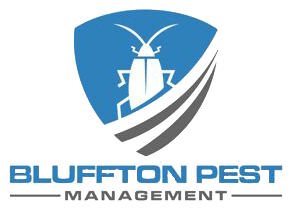The Evolution of Pest Control
Tracing The History And Advancements In Pest Control Practices
The history of pest control is a fascinating journey through time, reflecting our evolving understanding of the natural world and our place within it. By exploring the past, we can appreciate the modern advancements that have made pest control more effective and sustainable.
From the rudimentary methods of ancient civilizations to the high-tech solutions of the 21st century, each era has contributed to our current practices.
Ancient Methods
In ancient Egypt, Greece, and Rome, pest control was a crucial aspect of agriculture and daily life. The Egyptians, for instance, employed natural remedies like mixing ashes with water to create a pest-repellent paste. They also used predatory animals such as cats to keep rodent populations in check, a practice that laid the foundation for the domestication of felines.
Ancient peoples also turned to nature for solutions. Greek farmers used sulfur to fumigate their homes and granaries, while the Romans employed more advanced methods, such as cultivating plants like wormwood and rue, which were known to repel insects. Roman texts also reveal that they used fish oil as a repellent and even experimented with early forms of traps and barriers.
Cultural Practices
Different cultures around the world developed unique methods. In China, farmers used ants to protect their citrus orchards from pests. The ants would attack and drive away harmful insects, showcasing an early form of biological control. In India, neem tree extracts were used as insect repellents, a practice that continues in some rural areas today.
While these ancient methods were innovative, they had their limitations. The effectiveness of natural remedies was often inconsistent, and without a scientific understanding, many solutions were hit-or-miss. Additionally, the lack of technology meant that pest control was labor-intensive and not always practical for large-scale agriculture. Nevertheless, these early practices laid the groundwork for future advance ments.
Medieval And Renaissance Innovations
During the medieval period in Europe, herbal remedies were the primary means of control. Farmers and householders used a variety of herbs, such as tansy, mint, and lavender, to repel insects. These herbs were often hung in doorways and windows or scattered around storage areas to protect food supplies.
The Renaissance brought a renewed interest in science and experimentation. Alchemists and early chemists began to explore the properties of various substances, leading to the development of rudimentary pesticides. For example, arsenic, a naturally occurring element, was discovered to be effective against a wide range of pests. Though toxic, it became a popular choice.
Medieval and Renaissance farmers also developed agricultural practices to manage pests. Crop rotation, the practice of alternating the types of crops grown in a particular area, helped prevent the buildup of populations. Companion planting, where certain plants are grown together to deter pests, was another strategy used to protect crops. These methods were based on observation and experience, paving the way for more scientific approaches.
The Age Of Enlightenment And Industrial Revolution
The Age of Enlightenment marked a significant shift, as scientific inquiry began to unravel the mysteries of biology and behavior. Entomologists, scientists who study insects, made groundbreaking discoveries about the life cycles and habits of pests. This knowledge allowed for more targeted and effective control methods.
The Industrial Revolution brought about the invention of chemical pesticides. The discovery of synthetic compounds like DDT revolutionized control, providing powerful tools to combat infestations. Initially hailed as a miracle solution, these chemicals dramatically reduced populations and increased agricultural productivity.
During this period, the connection between pest control and public health became increasingly clear. Efforts to control mosquitoes and rats were crucial in combating diseases such as malaria and the plague. Public health campaigns and sanitation measures were implemented to reduce pest-borne illnesses, highlighting the importance of pest control in safeguarding human health.
Modern Techniques
Today, Integrated Pest Management (IPM) is the gold standard in pest control. IPM combines multiple strategies to manage populations effectively and sustainably. These strategies include biological, cultural practices, mechanical controls, and the judicious use of chemical pesticides. By using a combination of methods, IPM minimizes environmental impact and reduces the risk of pesticide resistance.
Biological control involves using natural predators, parasites, and pathogens to manage populations. For example, ladybugs are often released in gardens to control aphids, while certain wasps are used to target caterpillars. This method is environmentally friendly and can be highly effective when applied correctly.
The advent of technology has brought new tools and techniques to the field of pest control. Drones equipped with cameras and sensors can survey large areas for activity, while genetic engineering offers the potential to develop pest-resistant crops. Advanced pesticides, such as those that target specific bugs without harming beneficial insects, represent another significant advancement.
Environmental And Health Considerations
There is a growing trend toward sustainable practices. These include organic farming, which relies on natural pest control methods, and the development of eco-friendly pesticides derived from natural sources. Sustainable practices aim to balance effective control with environmental stewardship.
Government regulations play a crucial role in ensuring the safety and efficacy of pest control methods. Agencies such as the Environmental Protection Agency (EPA) in the United States set standards for pesticide use, conduct risk assessments, and monitor environmental impacts. These regulations help protect public health and the environment while allowing for effective management. For example, DDT was banded from use in the United States in 1972.
If you're dealing with pests in your home or business, don't wait for the problem to escalate. Bluffton Pest Management offers expert solutions tailored to your specific needs. Our team of professionals uses the latest techniques to ensure your space is bug-free and secure.
Contact us today for a free consultation or to schedule service.
